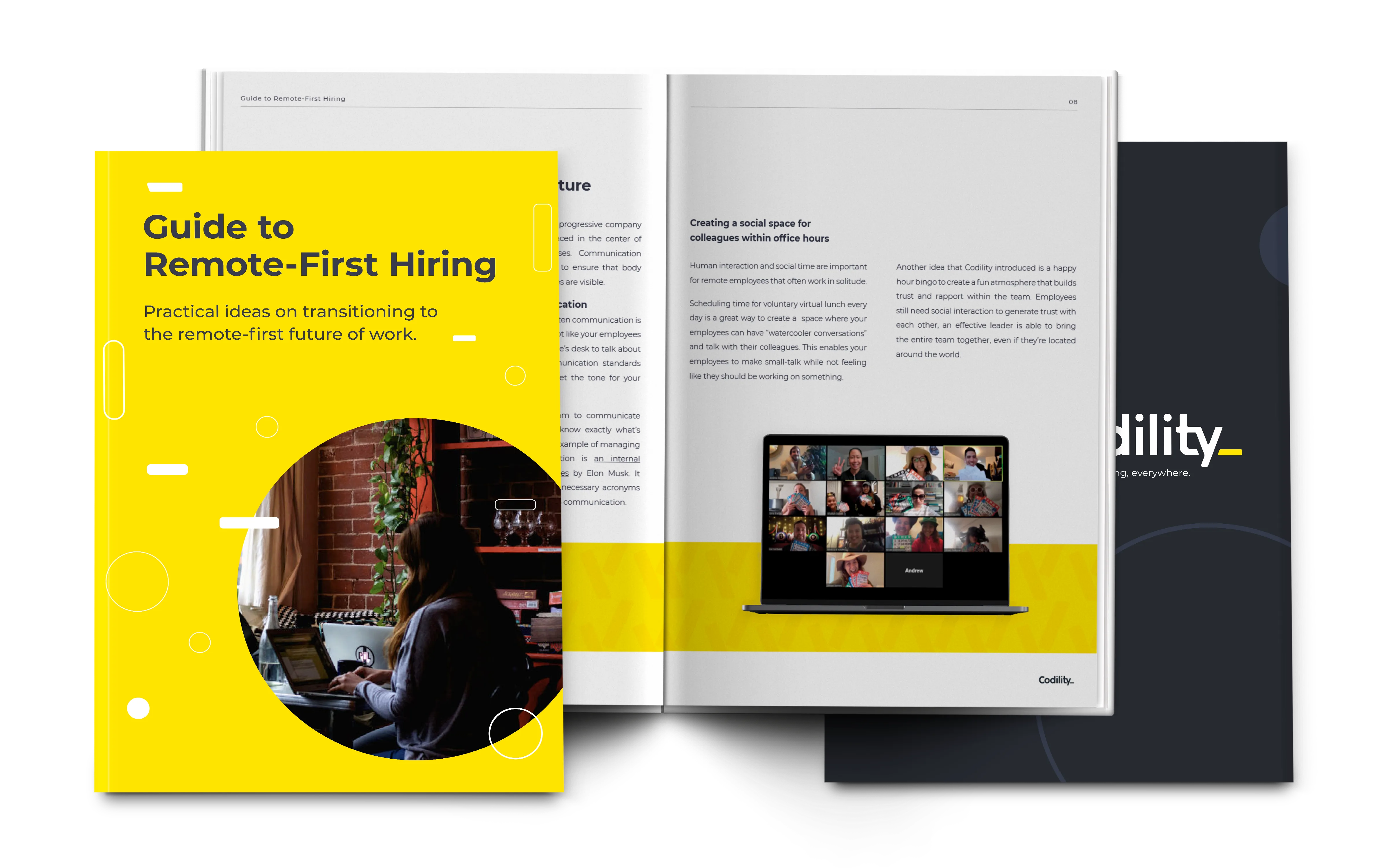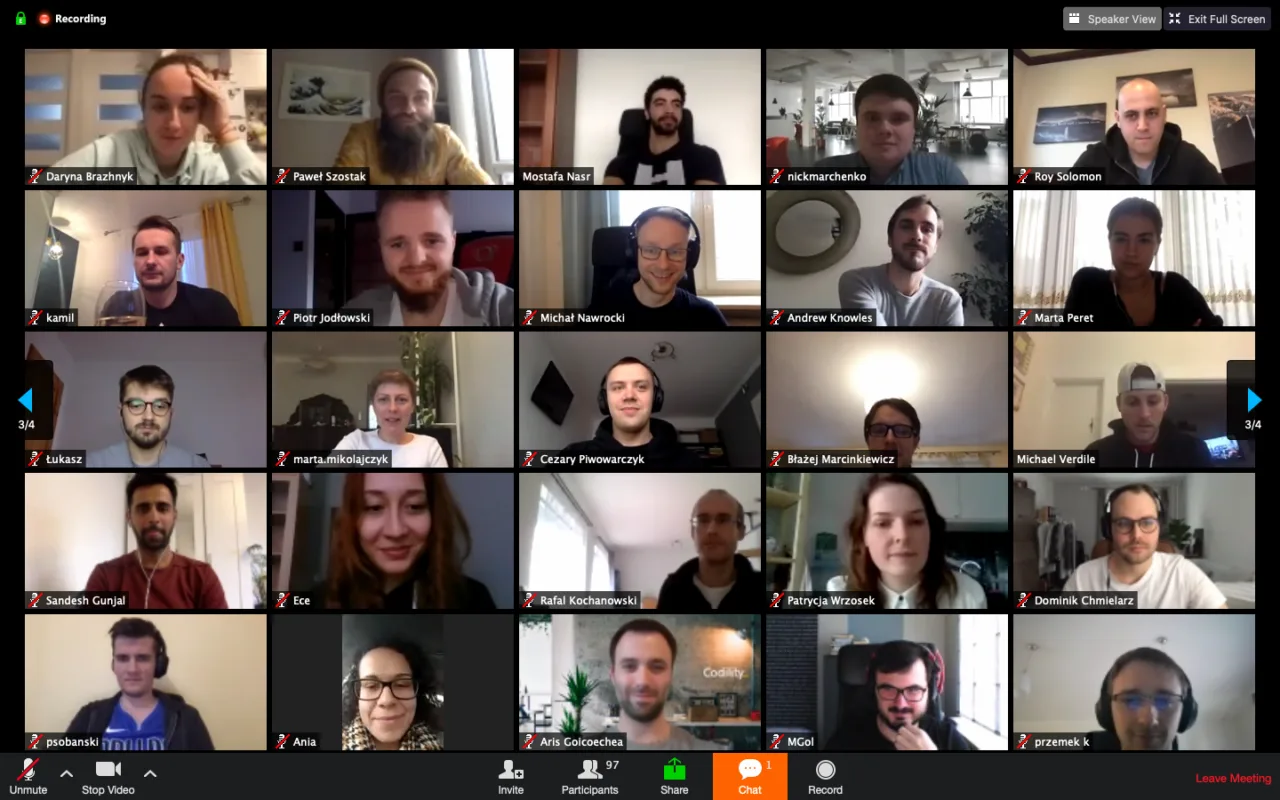Be the first to know
Sign up for a weekly dose of tech hiring news and updates.
Studies continuously show that remote employees are generally more productive than the average office worker.
That’s a major reason why remote jobs are such a key component of the future of work. But what’s the difference driving remote work productivity?
In many ways, it boils down to the shift from synchronous (real-time, in-person) communication to asynchronous communication that doesn’t require immediate response. Because remote workers rely more on email, Slack, and other asynchronous channels, they’re able to focus more on their tasks, set boundaries between their work and home lives, and craft more thoughtful responses to questions.
However, not everything can (or should) transition entirely to asynchronous communication. Especially in technical remote recruiting, you need a balance between the two to make the best decisions.
Ps. we’ve just released a guide to remote hiring, download it here.
The Asynchronous Side of Remote Hiring
The difference between synchronous and asynchronous aspects of your remote recruiting process isn’t just about what’s most convenient for you. So much of the candidate experience depends on when you decide to use real-time communication and when to communicate via email or another asynchronous channel.
If you’re trying to take advantage of the benefits of asynchronous communication, there are two main aspects of remote hiring to focus on—talent sourcing and coding assessments.
When you’re just starting talent sourcing candidates for a job opening, it may seem obvious that a real-time communication channel isn’t the best approach. Instead, you’d take the traditional path of writing up a job description and posting it across any and all relevant listing sites. But that’s not the only way to use asynchronous communication when talent sourcing candidates. We built CodeChallenges to help technical teams deliver more unique candidate experiences in the talent sourcing stage.
CodeChallenges enables you to run online campaigns to source new technical talent. Rather than waiting for applications to roll in and decide who to contact for phone and video calls, CodeChallenges gives you a unique way to attract ideal candidates whether they’re actively searching for a job or passively evaluating options. This asynchronous exercise puts your brand front-and-center for top technical talent that you can then choose to engage when positions open up.
In addition to CodeChallenges, we have CodeCheck to help you with asynchronous coding assessments. The best way to avoid bad hires is to take an evidence-based approach to decision making. We help you deliver detailed coding assessments that help you screen applicants based on their skills while also maintaining a positive candidate experience. This helps you avoid lost productivity from phone and video calls with candidates who aren’t right for the job.
Where other job functions may benefit from going all-in on asynchronous communication, remote recruiting can’t go quite so far. Even when hiring for remote positions, nothing can quite replace real-time communication to evaluate culture fit and confirm technical skills.

Synchronous Communication Beyond Phone and Video Interviews
No hiring manager or technical recruiter would ever discount the value of a phone screen or video interview. But it’s important to recognize that these aren’t the only real-time communication tools in your remote hiring arsenal.
Even though coding assessments are largely left to asynchronous communication, finding ways to build them into your interview process can significantly improve your decision making.
In the past, this might have meant pulling a whiteboard into a video interview and discussing a coding problem. Or, you could piece together a Google doc to collaborate on a hypothetical situation. But these are inefficient processes that do nothing to help the candidate experience.
When you commit to remote recruiting, you need a smoother way to conduct real-time interviews that include coding assessments and collaboration. Our CodeLive solution helps technical recruiters overcome this challenge and provide a seamless technical interview process.
CodeLive gives you a shared, live development environment that includes voice and video capabilities. This means you can conduct natural interviews between multiple hiring managers and a candidate that includes live coding assessment capabilities. In CodeLive, you can go beyond the standard phone or video interview by:
- Running Live Code Together: Asynchronous skills assessments give you an idea of a candidate’s capabilities. But real-time coding assessments help you see how a candidate thinks, collaborates, and communicates while solving a problem. This insight can make all the difference between a good and bad remote hire.
- Delivering Feedback Quickly: A modern remote recruiting tool isn’t worth much if it slows down your decision-making processes. CodeLive automatically generates interview reports and feedback forms so you can evaluate candidates with all necessary stakeholders immediately after a session. This leads to an increase in productivity in the interview process and faster responses, both which boost the candidate experience.
- Adapting to Interview Formats: There’s no one-size-fits-all approach to the technical interview process. You need to match the interview/coding assessment format to the role someone is applying for. CodeLive offers multiple modes to support a wide variety of formats that can help hiring managers create an experience that works best for them and their candidates.
The way you balance asynchronous and synchronous communication with remote job applicants comes down to your effort to balance candidate experience with accurate decision making. Doing so effectively starts with understanding the behaviors and expectations of the candidates you’re trying to reach.
If you want to get more information on how to transition to a remote hiring organization, check out our Remote Hiring Guide, full of practical advice you can implement in your team this week.
Switching to remote?
Download our Guide to Remote-First Hiring, filled with practical advice on how to transition your team effectively.

